-PART 1-
FIREARMS 101
You’re starting out, you don’t even know what it is that you don’t know yet.
No worries. I’ve got you covered.
Getting into guns is a huge undertaking when you start to think about it. If you want to do it the right way, it can seem like there are a million things to consider before you even get started.
The first time I talk to new students, they’re thinking things like:
- “I don’t even know anything about guns”
- “I don’t understand half the stuff I’m reading about them.”
- “Where do I even go to shoot them or try them or learn more?”
- “Do I need a special license to shoot or something?”
- “I don’t have any gun friends to ask about this stuff, what are good companies?”
Essential Knowledge for the New Shooter will get you pointed in the right direction in the important areas you need to know about right now and you can continue your learning at your leisure.
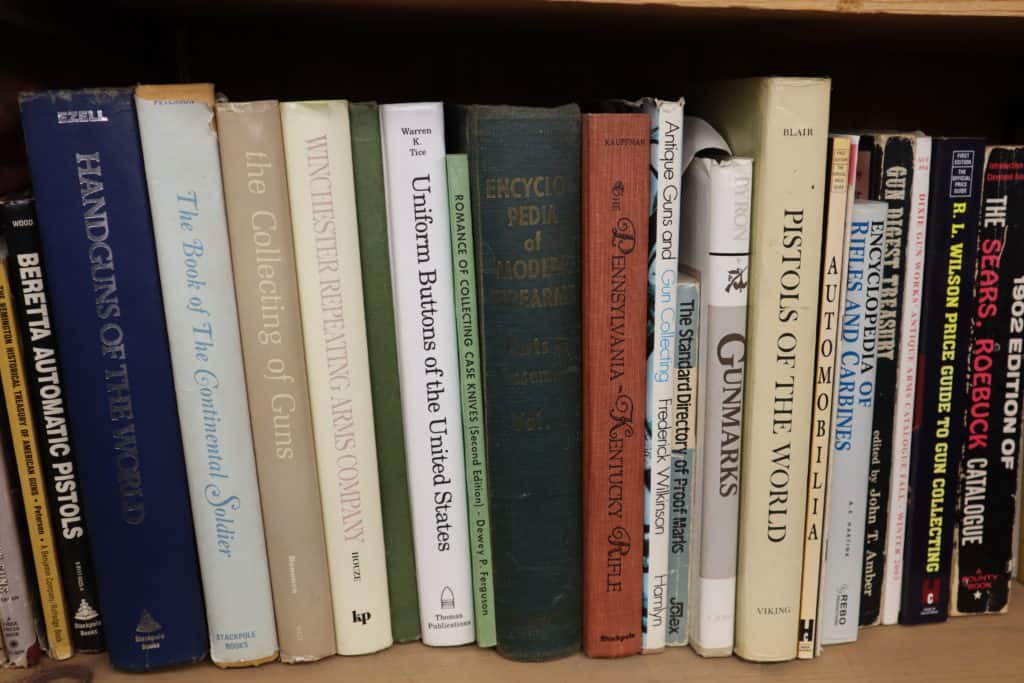
You don’t need an encyclopedic knowledge of all things “gun” to be a safe and efficient handgun shooter. You definitely don’t need it when you’re just starting down the road beginning to take a look at guns.
What you do need is the foundation of the right basics to get you started. That’s what we’re talking about here today.
Let’s start with the Top 5 Categories of Firearm Knowledge you need right now:
- Firearms 101 – How they work and what “kinds” there are.
- Gun “lingo” – How do I “speak gun” and understand what I’m reading here?
- Gun Laws – Where to get the best information on the legal side of things.
- Range Basics – What to look for, where to go, what to ask, and how to find them in the first place.
- Gun Companies – If someone asked me to list all of the car companies when I was 16 buying my first car (or to this day, for that matter) I would be at a loss! Use our list to navigate your way through the noise, using the information you’ll learn here to find the gun that’s perfect for you.
This will not be a very deep dive into any of these topics!
Put away the pen and paper and simply read and absorb. Bookmark this post and come back to it to use all the links and information herein whenever you get the time.
This is not going to be something that you will completely absorb the first time around, trust me. I’ve picked these topics to introduce now for that exact reason.
You’re getting yourself ahead of the gun-game here.
When you’re done, you will be set and ready to start taking your first steps towards heading out to the range armed with all the information you need to start making choices towards finding and shooting your ideal handgun. (Pun very much intended.)
Firearms 101… where to begin?
First, with some basic terms so we’re on the same page as we talk moving forward.
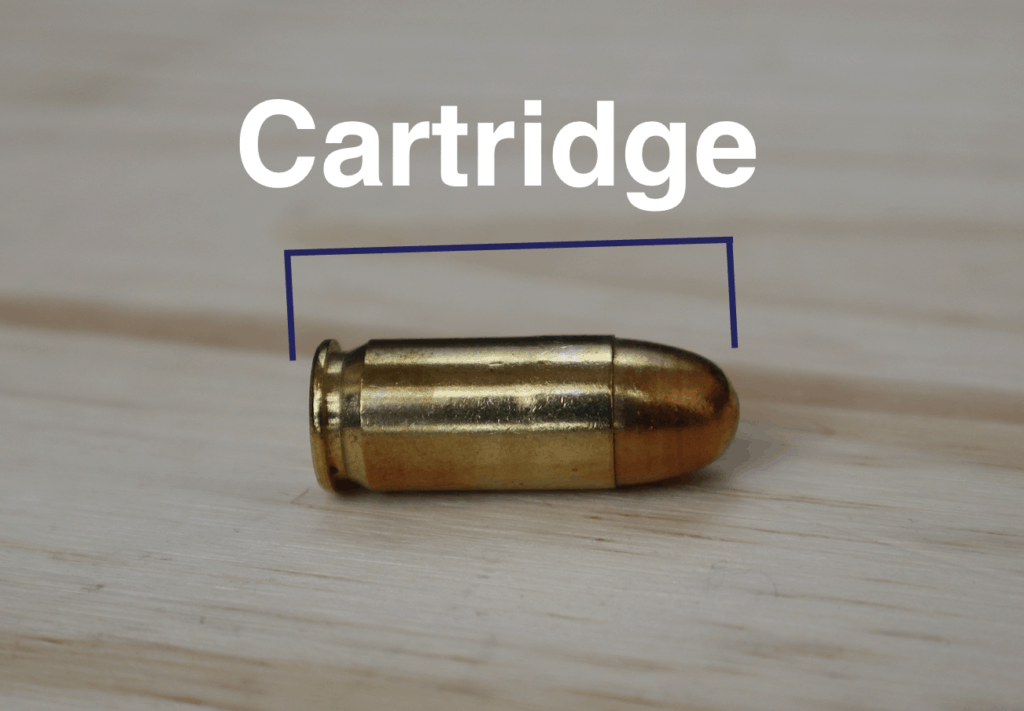
This is a cartridge, or a “round”, or ammunition
(NOT a bullet. Calling a round of ammunition a “bullet” is like calling someone’s entire body a “foot.” Sure, the foot is part of the body, but the body’s made up of much more than that.)
A cartridge is made up of:
- A Bullet – the projectile that leaves the firearm.
- A casing, or case – the housing that holds together the primer, bullet, and gunpowder (usually made of brass, if not then steel or aluminum.)
- Powder (inside the case) which, when ignited, causes the explosion that fires the bullet.
- Primer – the disk struck by the firing pin (part of the firearm) that causes a spark that ignites the gunpowder.
Now… what is a firearm?
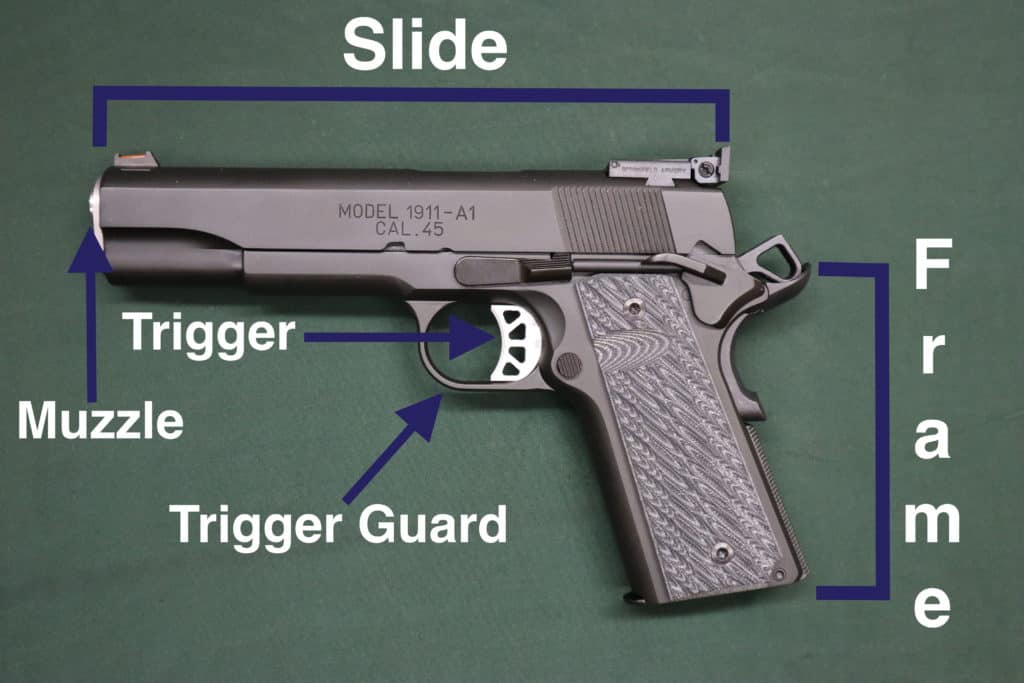
Semi-Automatic 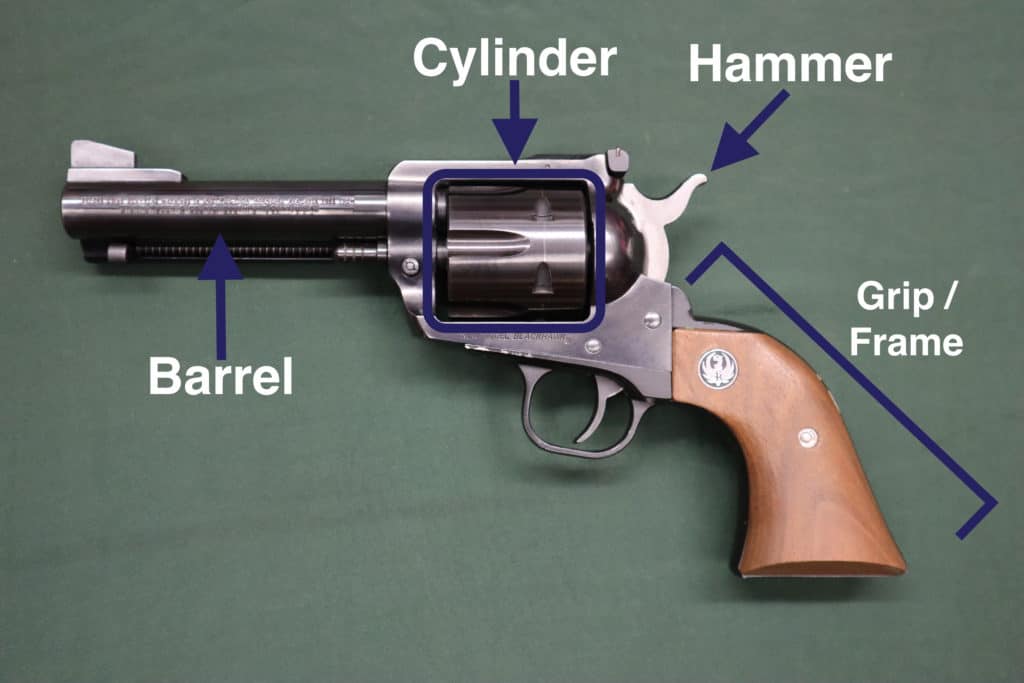
Revolver
At its core, all a gun is, is a tool used to propel missiles using an explosion. Sounds cool right? It is.
There are 3 main “types” of firearms.
1. Handguns 2. Rifles 3. Shotguns
We’ll be focusing here on handguns, or pistols (the words are interchangeable.)
Under the umbrella of handguns you have 2 main “types” of handguns:
- Revolver
- Semi-automatic
*All revolvers and semi-automatic handguns operate based on the same principals, getting the same results (a bullet propelled downrange.) The way they function to get that result is what varies.
The steps for the functioning of most all handguns are as follows.
1. There is a cartridge loaded in some kind of “chamber”.
For a revolver, the chambers are in a cylinder, like that on the left below
For a semi-automatic it’s a single chamber like that on the right above
2. A firing pin (either attached to the end of a hammer or a striker) strikes the primer of the loaded round, causing an explosion that propels the bullet down the Barrel and downrange to your target.
3. Now that the bullet has left the gun, something must be done with the empty case, and a new live round must be made ready to fire.
For a revolver, the empty casing stays in the cylinder after you fire it for you to manually remove. You either cock the hammer or pull the trigger again to rotate the cylinder to line up a new live round to be fired.
For a semi-automatic, the force of the explosion forces the Slide to the rear and ejects the empty casing, while loading the next live cartridge into the chamber from the magazine.
There you have the basic functions of all handguns. Now back to the differences in the types.
Under the umbrella of revolvers you have:
- Single Action Only – Think old school, cowboy style guns.
- Double Action only (often called “hammerless”)
- Both, or SA/DA (often referred to as simply “double-action”) – Think of your typical, modern day, Smith and Wesson revolver.
The main differences between revolver “types” are:
Single action – You have to manually cock-back the hammer and then you pull the trigger (which will be very light) to drop the hammer on the cartridge being fired.
Double action only (hammerless) – You must shoot the gun double action. With no exposed hammer, you don’t have the option to cock it back before shooting.
Double action, or SA/DA (both double and single action) – You have the option to either cock the hammer back and shoot single action, or simply pull the trigger and shoot double action (which will result in a longer and slightly more difficult trigger pull.) Most modern-day revolvers are of this “double action” type.
Under the umbrella of semi-automatics there are a few “types”
Legally Armed America has made an excellent video talking about the differences I will be covering below, you can find it here. They have done a good job side-stepping many common mistakes people often make when speaking on this topic.
- Single action – Exposed hammer must be cocked back in some way before shooting (think 1911)
- Double Action, (often called “double action/single action”) – (Most modern handguns that still have an exposed hammer, not including 1911s) – You can either cock the hammer manually (pulling it back or racking the slide) and shoot it single action, or use the trigger to pull it all the way and shoot it double action. Once you fire the first shot, the rest of the shots will be shot as a single action. This is because the slide moving back after you shoot always keeps the hammer cocked.
- Double Action only – Like with revolvers, double action only handguns are somewhat rarer, and are not meant for target shooting since they have a much more difficult trigger pull. (Think Smith and Wesson Bodyguard or Ruger LC380.)
- Striker-Fired, or Striker Action – (Think Glock) I’m putting them into their own category here because they are their own beast, to be sure. The slide must be “racked” (pulled all the way back and sent forward) to cock the striker and every pull is like a single action pull, yet the trigger pull does “prime” the striker to go forward, like a double action would. It’s a common industry standard to put striker fired guns in a category all their own since they don’t cleanly fit into any previously established category.
We won’t concern ourselves with diving headlong into any more of the differences here just yet, no need to get overwhelmed right out of the gate.
Bottom line is this:
Nearly every semi automatic handgun functions the same way:
For a video overview, rather than making you wait weeks on end while Cobalt Firearm Instruction learns yet another technology to make it for you, I will link you to one of the most well-done videos I could find of the functioning of a semi-automatic handgun. The handgun in the video is a striker fired handgun, but the main points of how semi-automatics function (listed below) are well covered and illustrated. You can find the video here. Feel free to begin watching at 1:29 when they load the magazine into the firearm.
- You load a magazine with ammunition (rounds, cartridges) and insert the loaded magazine into the magazine well (hollow core of the handgun’s grip).
- By operating the slide (either pulling it back and closing it again, or closing it if it was already open) the gun loads the first round from the magazine into the chamber to be fired.
- The pulling of the trigger sends the firing pin (whether attached to the striker or to an external hammer) into the primer of the chambered (loaded) round.
- The gun goes boom and the bullet goes downrange.
- The gun uses the energy of the explosion to “cycle” (sends the slide backwards.) When the gun “cycles” it removes your empty casing and loads a new one into the chamber, all ready for you to shoot when you pull the trigger again.
And revolvers function like this:
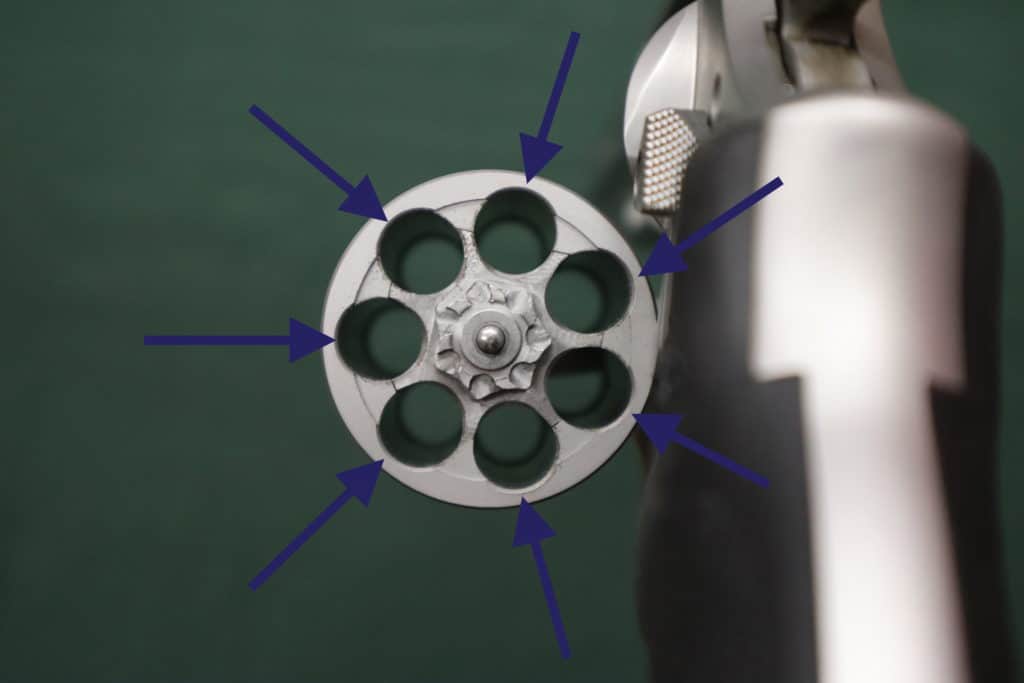
- You load ammunition into the chambers in the cylinder (pictured above).
- In a double action revolver, you close and lock the cylinder into place. In a single action revolver, you simply close the loading gate, as the entire cylinder does not swing out on a hinge as it does on a double action.
- By either: cocking the hammer back manually, or by pulling the trigger, the cylinder rotates a live cartridge in front of the “about-to-fall” hammer.
- Once the trigger is fully pulled, the hammer falls on the primer of the chambered (loaded) round.
- The gun goes boom and the bullet goes down range.
There you have it. Firearm basics. You can, should, and most likely will, do a much deeper dive on the topic in the future. For now you have the essential information covered, and we’ve dispelled a couple of common misconceptions in the process.
“Chris, what about ammunition?”
Excellent point, a quick look before we move on then.
IMPORTANT NOTE – Before we move into ammunition, I would be remiss if I didn’t mention something that you will hear me say time and time again in the future. MAKE SURE YOUR AMMUNITION MATCHES YOUR FIREARM BEFORE YOU SHOOT! I cannot stress this enough. Serious damage to you, your firearm, and shooters around you, can occur if you try to shoot ammunition out of a gun that it was not designed for! ALWAYS take the 2 seconds necessary to double-check before you shoot.
Ammunition is classified by size, either in Caliber or Millimeter.
Caliber refers to the diameter of the bullet in inches.
.22 caliber ammunition = .22 Inch diameter bullet – The bullet, when looked at from straight on, measures .22″ from side to side.
“Twenty-two caliber” or simply, “twenty-two” is how you would say the name of this ammunition when speaking.
A decimal point always precedes the number when you are writing about caliber ammunition (i.e: .22, .380, .40, .357, etc.)
Millimeters refers to just that, Millimeters. (fairly simple)
9 millimeter ammunition = 9 millimeter diameter bullet – The bullet, when looked at from straight on, measures 9mm from side to side.
“Nine Millimeter” is how you would say the name of this ammunition when speaking.
A decimal point never precedes the number when you are writing about millimeter ammunition. You are talking about whole millimeters (i.e: 9mm, 10mm, 7mm, etc.)
You can ask a firearms historian exactly why some are in caliber, and some are in millimeter and they will talk your ear off for hours. The country of origin typically dictates the nomenclature for a new cartridge.
For now, it is just important that you know the two main ways ammunition is classified and named before we keep on going down the trail.
3 factors alone will decide the right caliber (size/type of ammunition) for you.
- Your intended purpose (you don’t want a .22 for personal protection and you don’t need a .50 Caliber to shoot targets on the weekend.)
- Your ability (how much recoil can you effectively control.)
- Lastly, your comfort. You may have the ability to control a .45 just fine, but maybe you like that you can usually find guns in 9mm that allow you to carry more ammunition on account of them being smaller rounds.
Now let’s look at a quick list of the main calibers you will run into as you begin your searching. We will have a post coming out soon doing a deep dive into ammunition.
This list is not exhaustive. This is a primer like everything else today. I want to give you best information with which to begin your searches, based on what you will most likely see.
This is a list of the main calibers in order of increasing size (and usually, price.) The titles correspond to the pictures below them.
.22lr (long rifle) – A small round, good for plinking and varmint control.
.22 Magnum (.22 HMR) – .22lr’s much angrier big brother. Same diameter bullet with much more powder behind it in a larger case.
.380 – Sometimes referred to as the “baby 9mm” because they share the same diameter bullet but the .380 has a shorter case and less gunpowder. In my opinion, the .380 is the smallest of the viable self-defense rounds.
.38 – A classic revolver round. Good for self-defense or as a target shooting alternative to the .357. (You can shoot .38 out of nearly every gun that’s built to shoot .357.) Many people do this to save money and deal with less recoil when practicing on the range.
.357 – Very similar sized bullet to a .38 with a lot more “wallop” packed behind it with more powder in a larger case.
9mm – One of the most common modern day rounds of ammunition. A versatile round, good for everything from self-defense to target shooting and competition. Offers less recoil than a .40 or .45 while still delivering a large enough bullet to be viable for personal protection.
.40 – Another very common modern day round, used heavily in law enforcement for many, many years. Not as common in recent years as it once was, still a ubiquitous ammunition nonetheless. Plenty large for personal protection and not so large to make it a bad choice for someone just looking for a “target shooting gun.”
10mm – much less common than any of the others on this list but this particular round is making something of a come-back lately. Think of it as the bigger, angrier brother of the .40 cal (pictured above.) Commonly used as a semi-automatic option for people who want to bring a gun hunting where they may encounter bears or other large predators.
.45 – Ahhh the .45. Thought for years to be the only viable self-defense round. In an era where there was only ball ammunition, an argument could certainly be made for that claim. Nowadays, with ammunition technology progressing and calibers as small as 9mm and .380 being rendered very lethal by hollow point ammunition and the like, it has seen a slight drop in popularity as a self-defense round. .45 is a larger cartridge and allows shooters to carry less of it around while still concealing a gun on their person. It is still the biggest kid on the block among commonly seen rounds of ammunition and is still in widespread use worldwide.
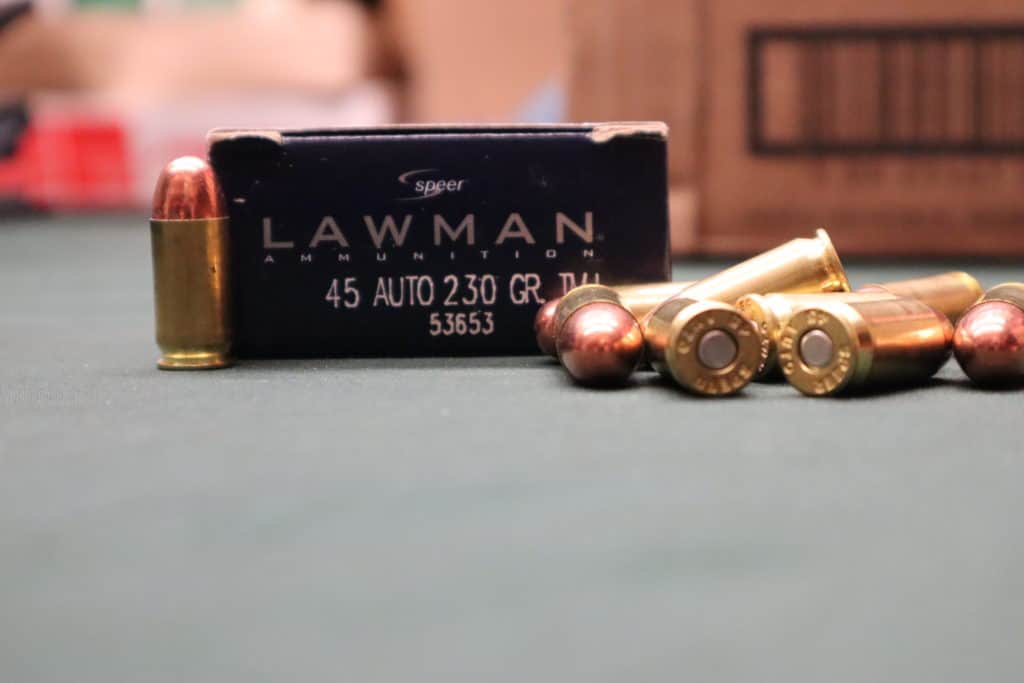
There are plenty more than just these available. The list of cartridges and calibers goes on and on and on.
This is a good list to start with. These calibers make up about 90% of what you will run into shooting modern handguns on your basic shooting range.
Conclusion
You’ve absorbed a lot today. Give yourself a pat on the back and bookmark this page to come back to later.
We’ve covered:
- Firearm Basics – What a gun is and how it works.
- Handgun Types – Revolver vs Semi-Automatic.
- “Actions” – Single vs double and what that means for each kind of handgun.
- Ammunition – How it’s classified and some common types you will run into in your searches.
In all honesty, I was originally going to post this along with the rest of “Essential Knowledge for the New Shooter” in one fell-swoop. Realizing that even my friends who are familiar with firearms could hardly absorb that amount of information in one go, I decided to break it up into at least 3 parts.
All I’m trying to say is that if you’re a bit overwhelmed with the information so far, you’re not alone and it could have been much worse. I will be back this coming Thursday with part 2!
This week, while you do some homework and start learning about this awesome world of firearms, don’t forget to keep doing the other things you love. It’s easy to get wrapped up in the new lingo, in the videos and the learning and the training. I do this for a living, I love it, and I never want to stop learning. I too, have to check myself sometimes to make sure I don’t get too carried away. There are still friends to talk to, books to read (that don’t involve firearms), hikes to hike, and so on. Cobalt Firearm Instruction’s mission is to build excellent, well-rounded shooters. Make sure as you start down this path that you keep every part of yourself at the best level it can be, physically, mentally, spiritually.
As always, Stay Smart, Stay Safe, and Never Stop Improving.


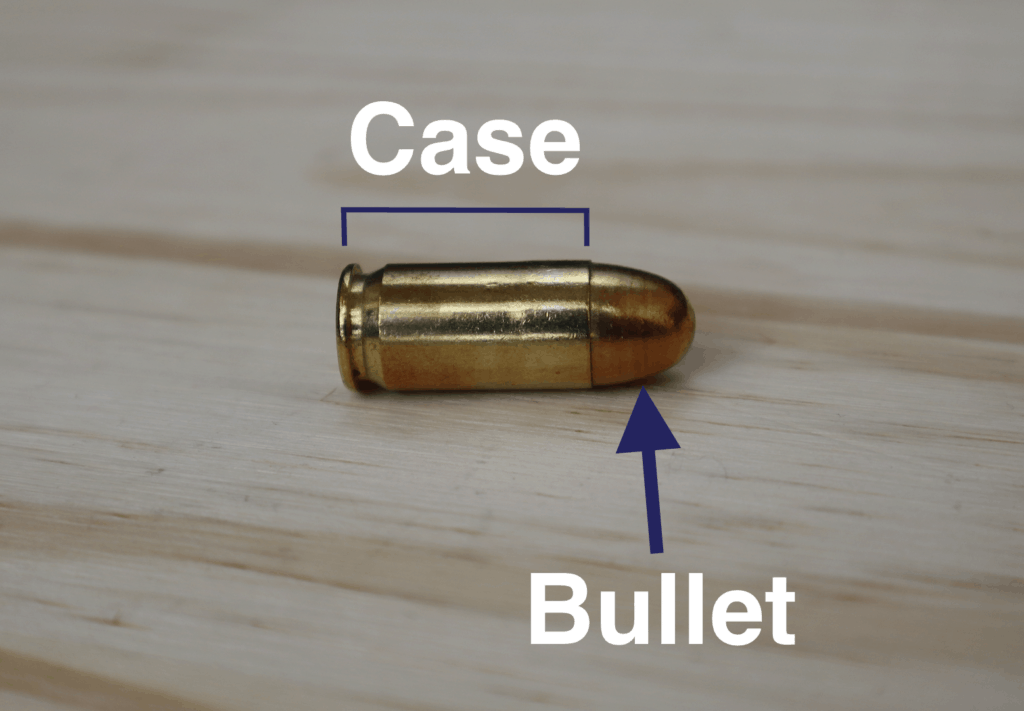
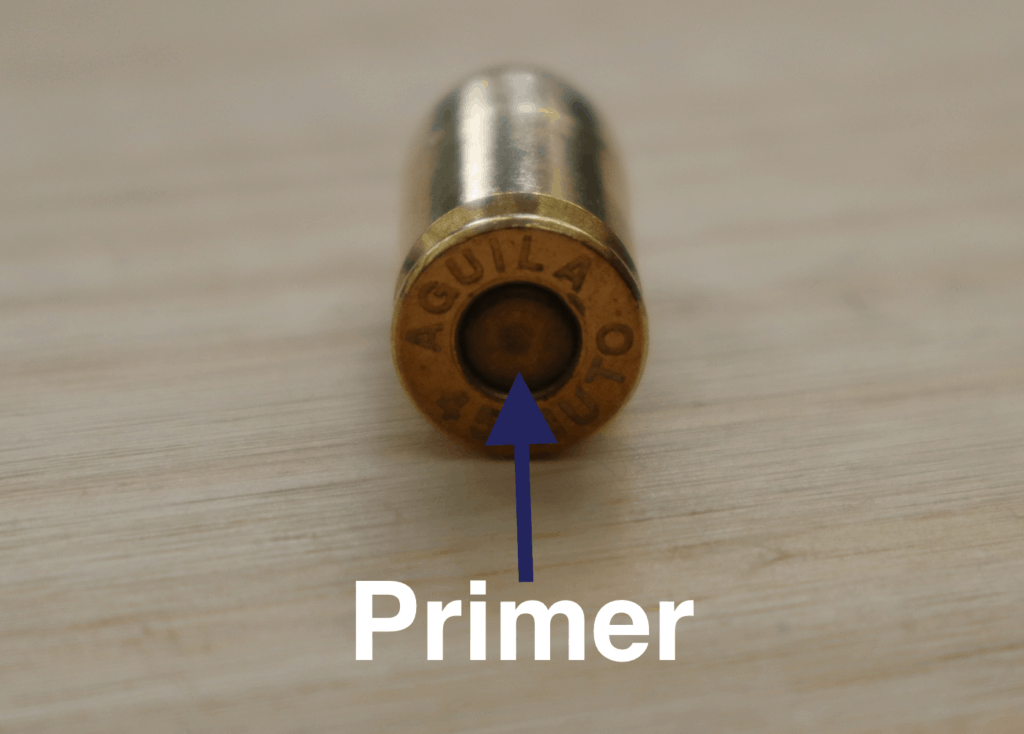
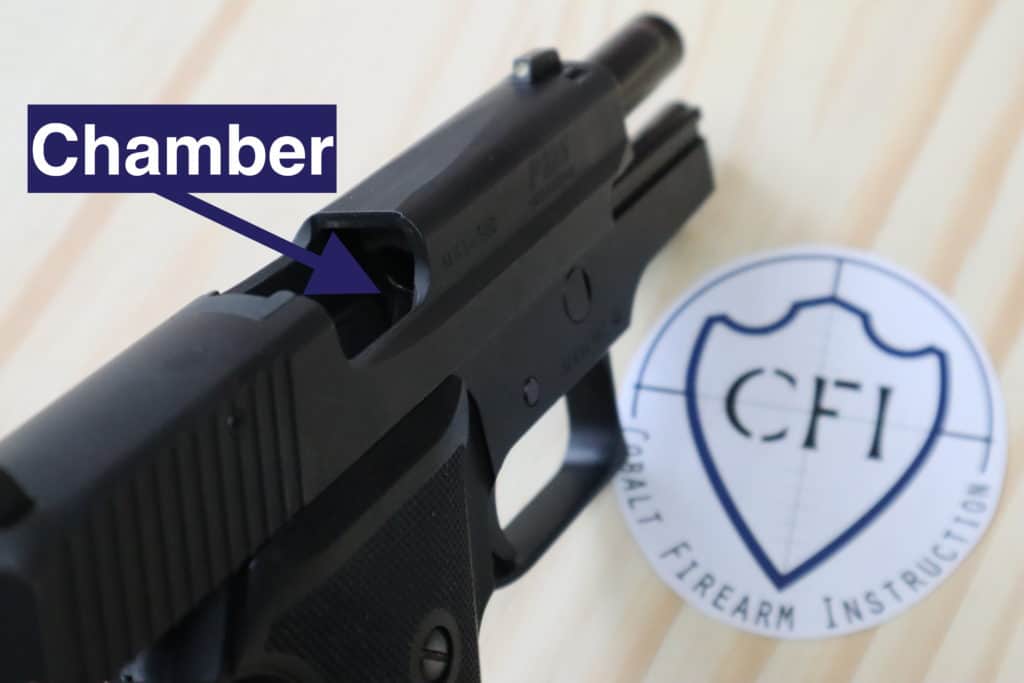

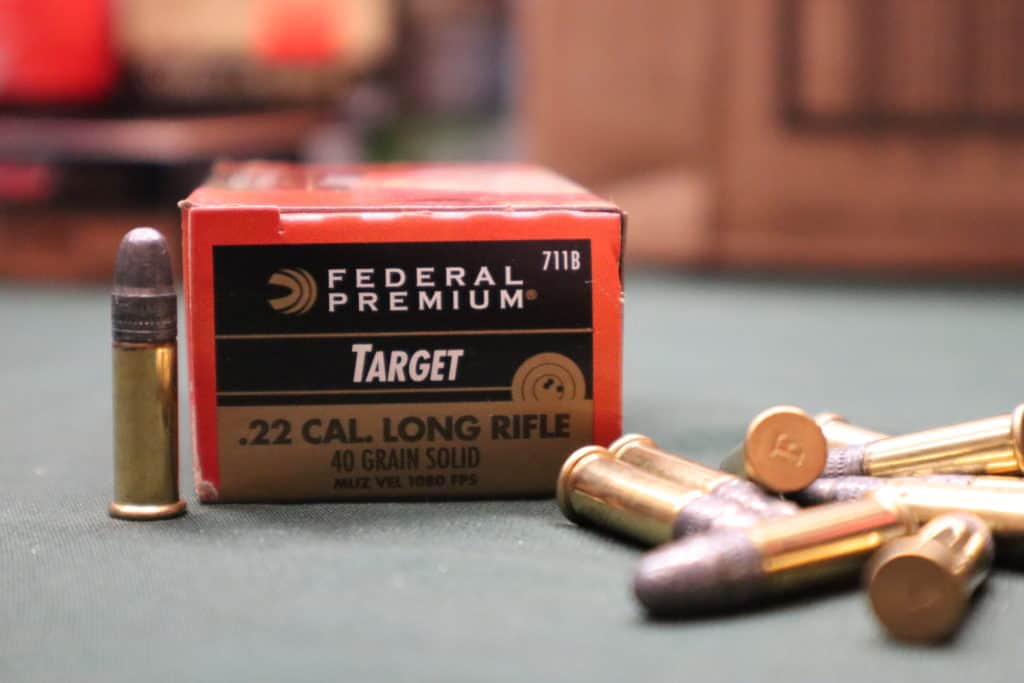
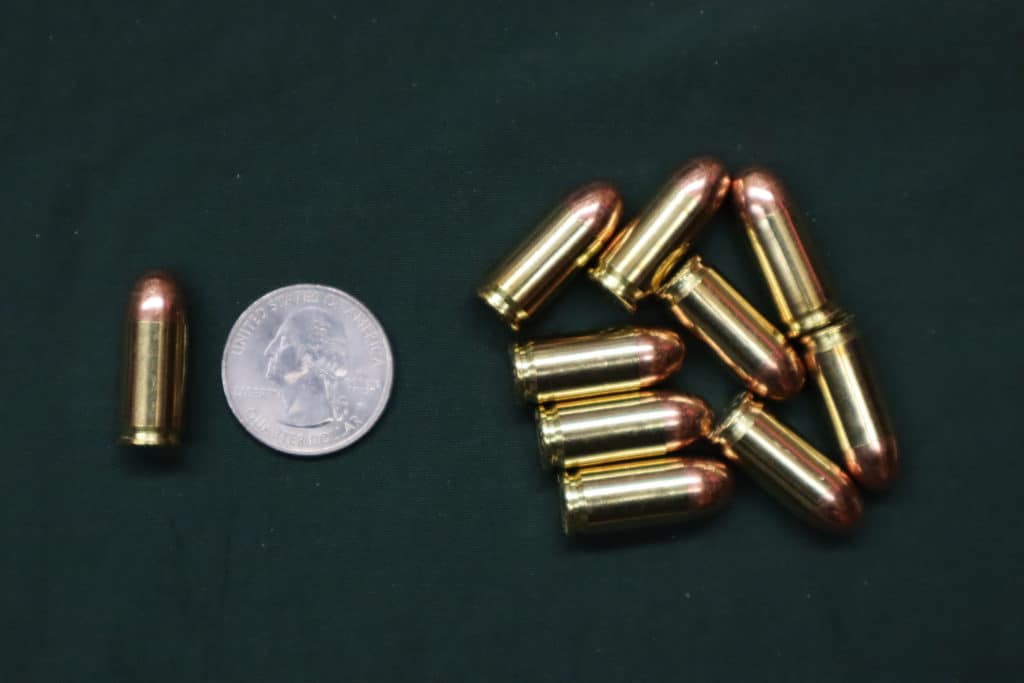

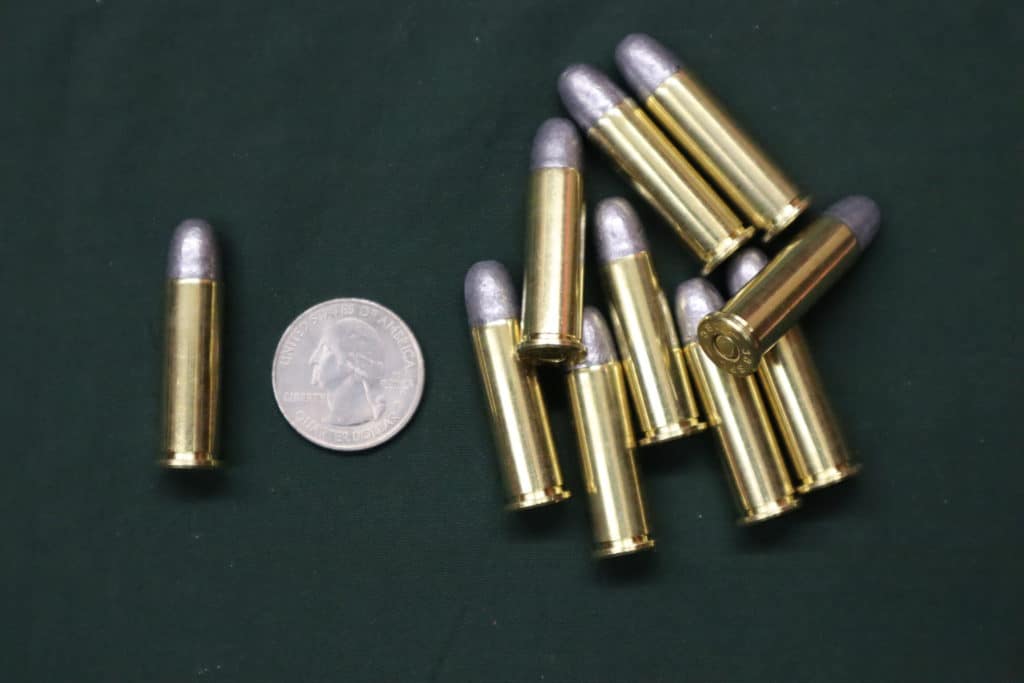
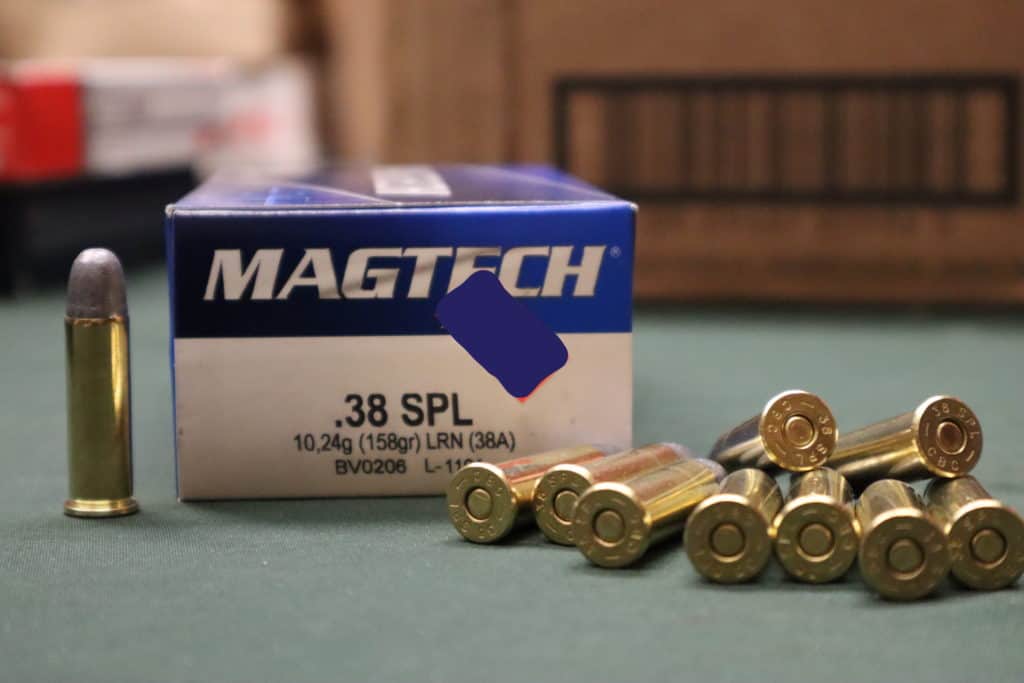
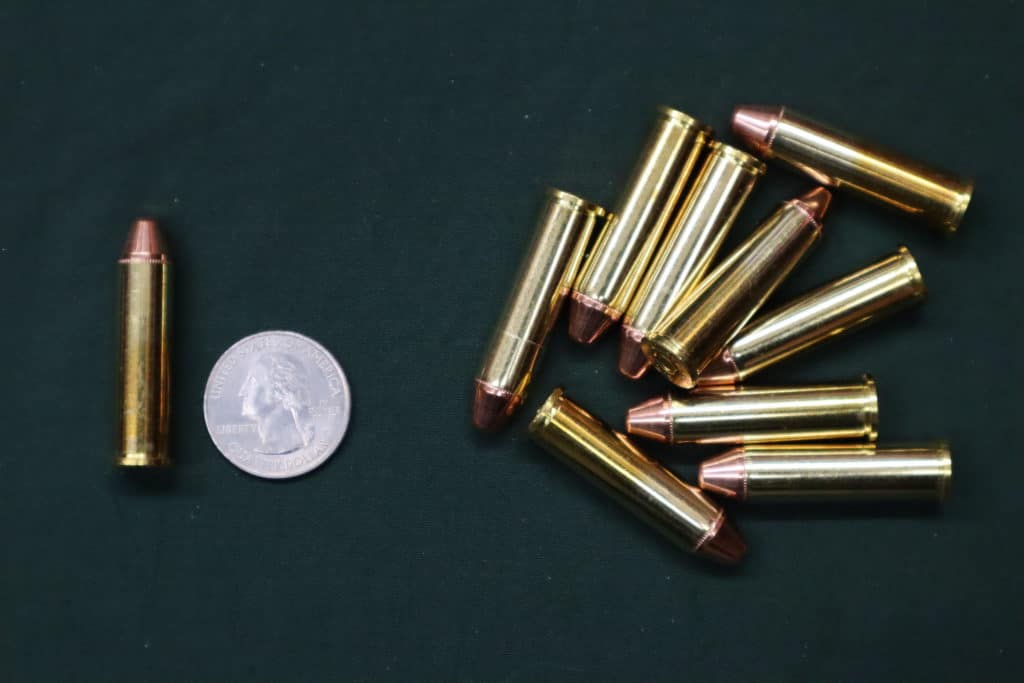
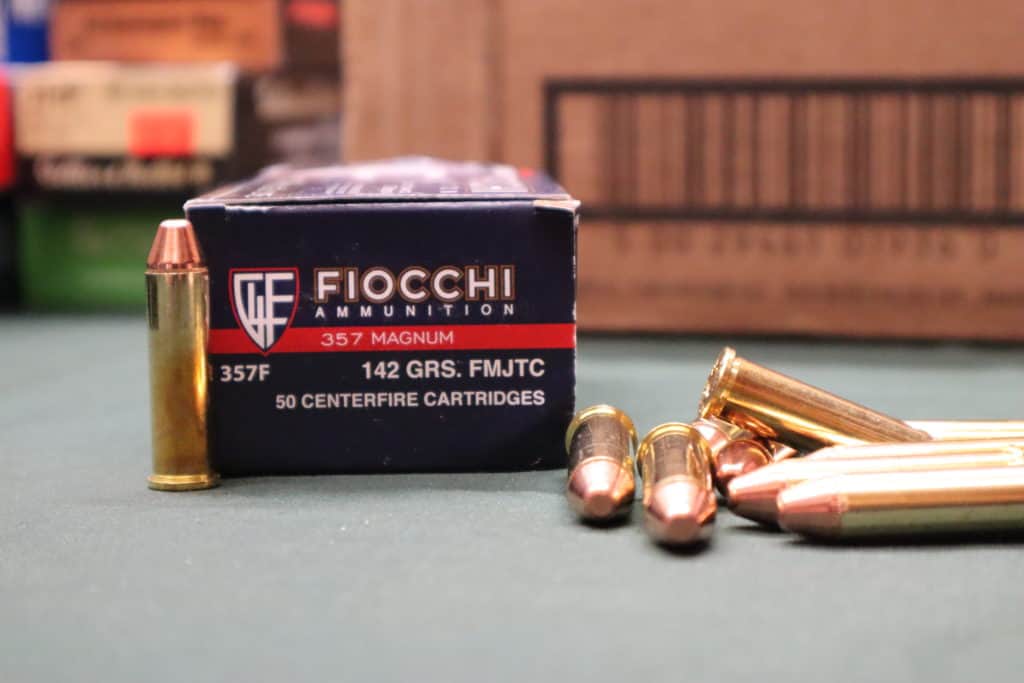
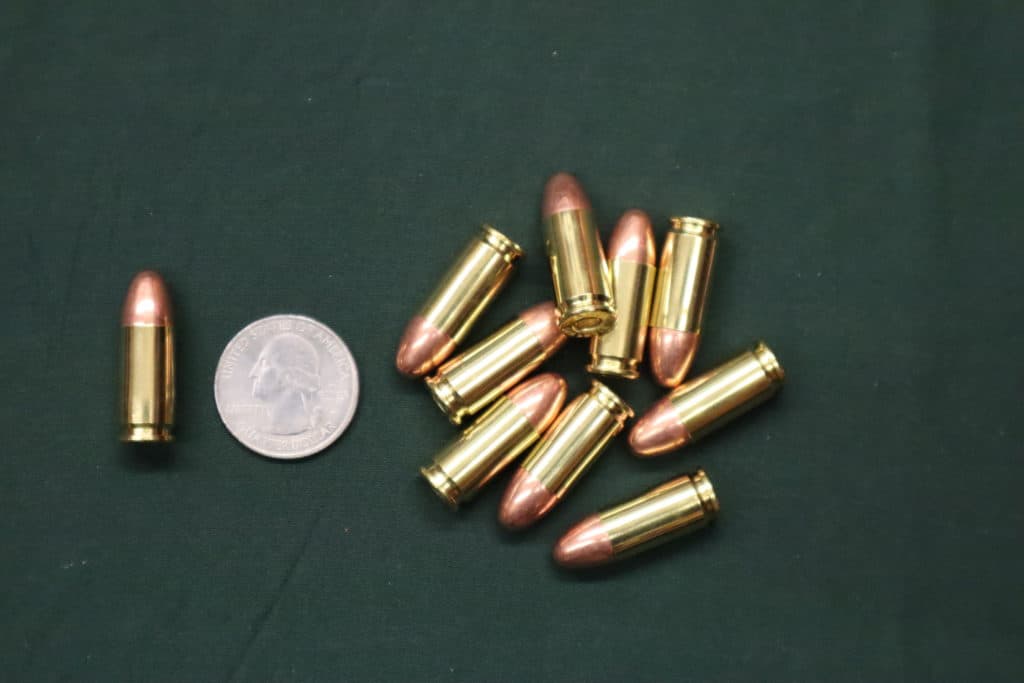


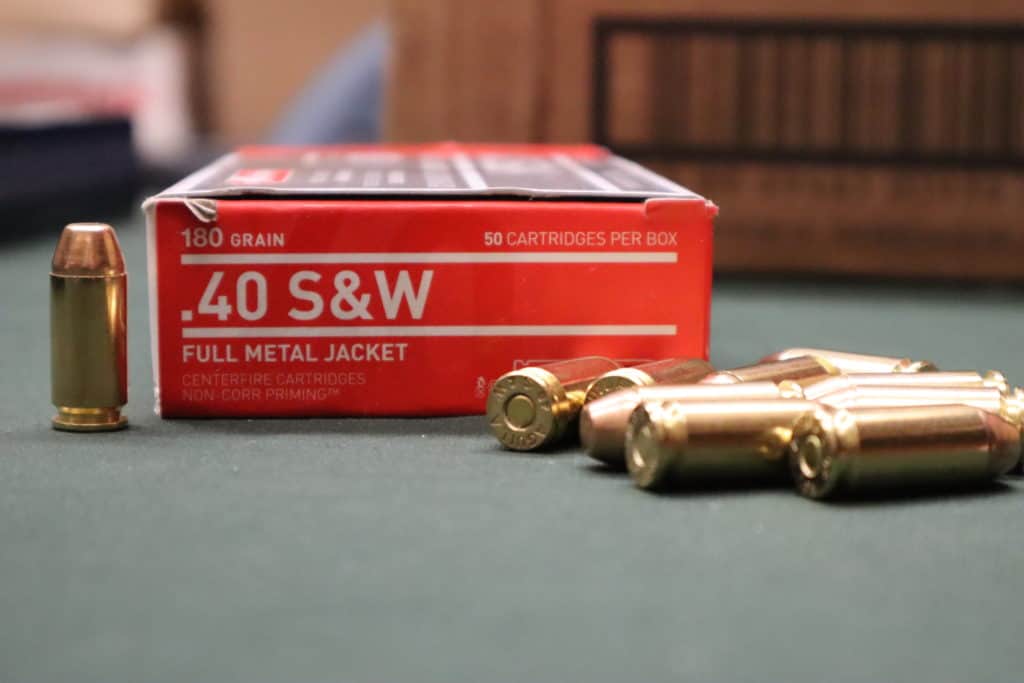
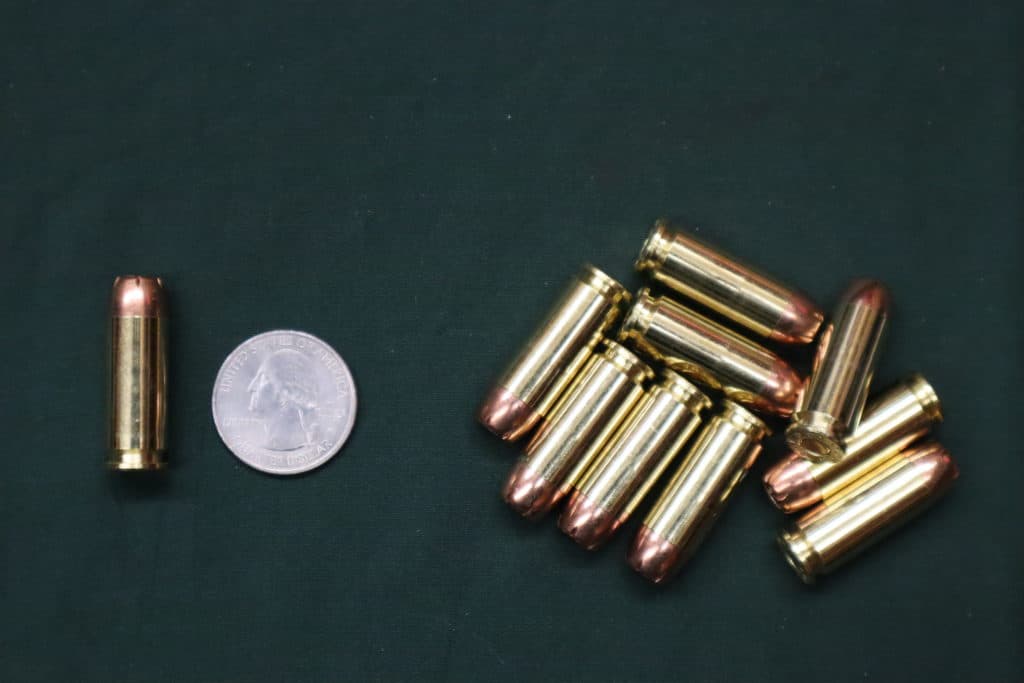
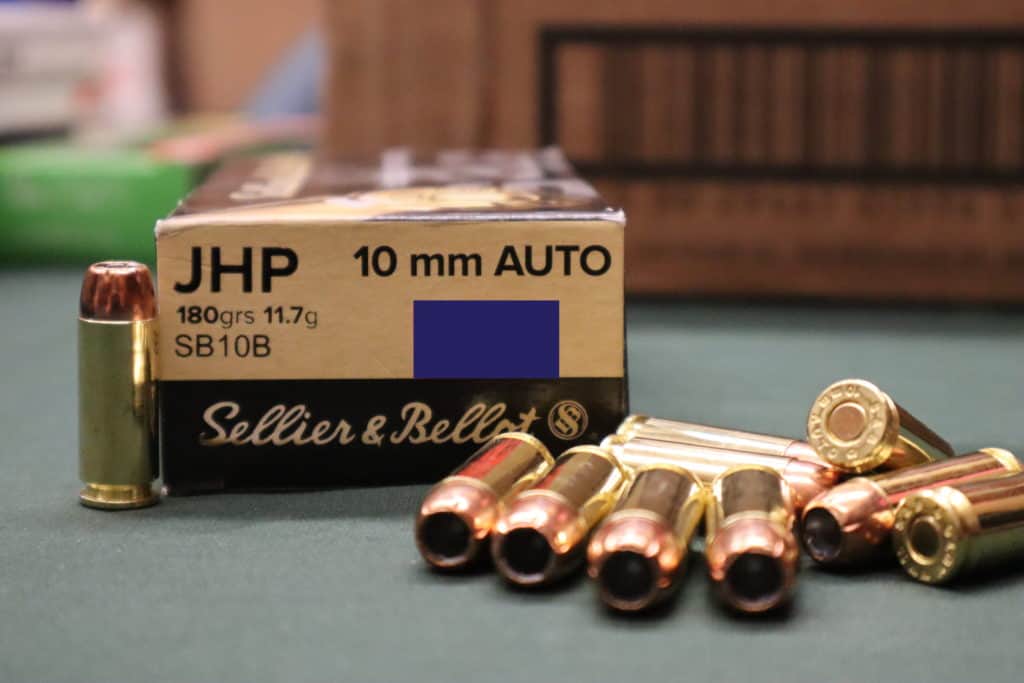
Pingback: Essential Knowledge for the New Shooter - Part 2
Great content. Keep it up!
Much appreciated! Thank you for reading and always feel free to send more comments and questions.